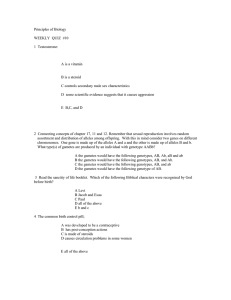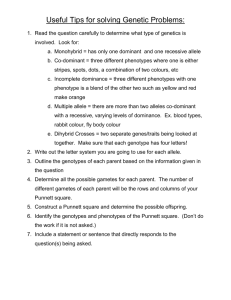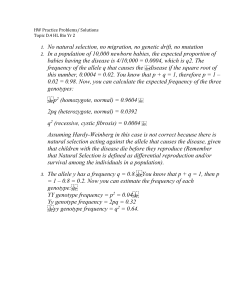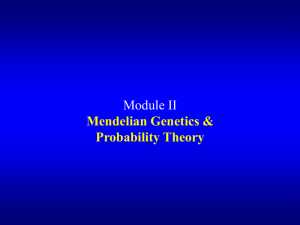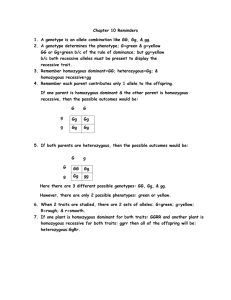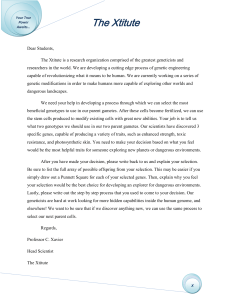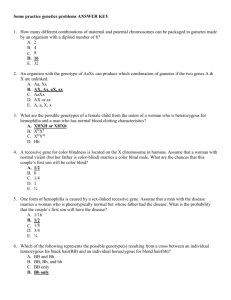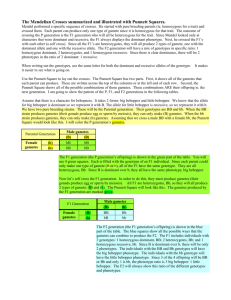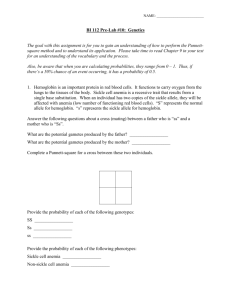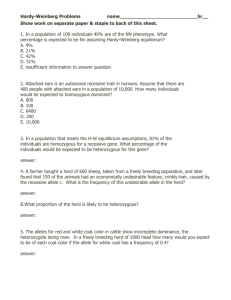Final Review
advertisement
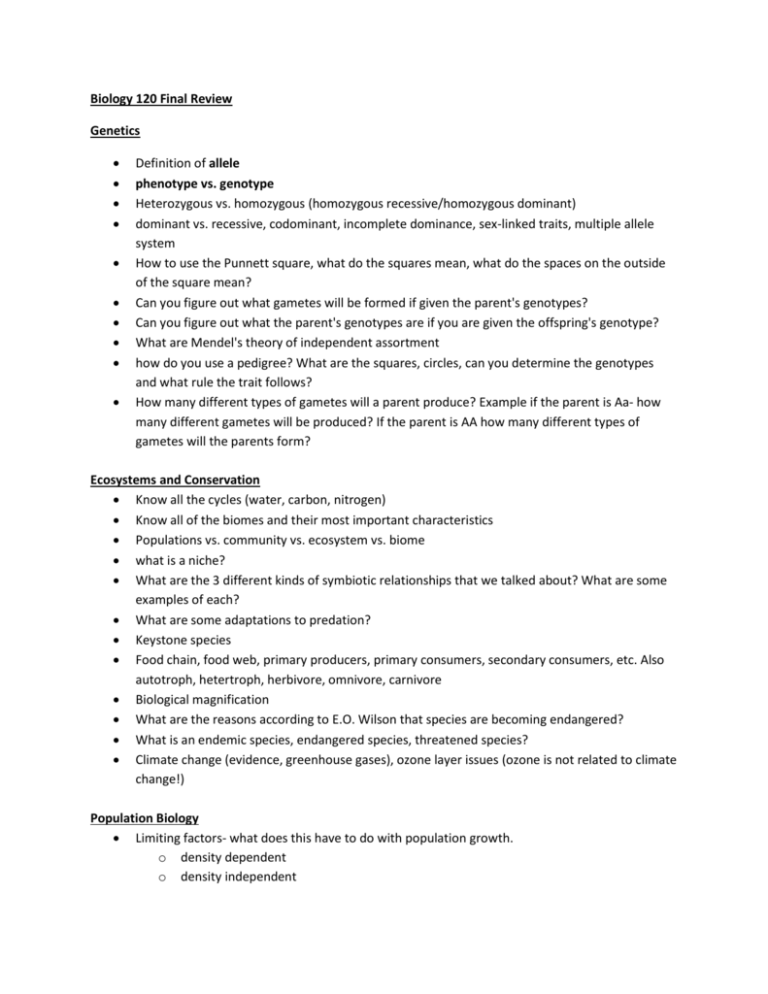
Biology 120 Final Review Genetics Definition of allele phenotype vs. genotype Heterozygous vs. homozygous (homozygous recessive/homozygous dominant) dominant vs. recessive, codominant, incomplete dominance, sex-linked traits, multiple allele system How to use the Punnett square, what do the squares mean, what do the spaces on the outside of the square mean? Can you figure out what gametes will be formed if given the parent's genotypes? Can you figure out what the parent's genotypes are if you are given the offspring's genotype? What are Mendel's theory of independent assortment how do you use a pedigree? What are the squares, circles, can you determine the genotypes and what rule the trait follows? How many different types of gametes will a parent produce? Example if the parent is Aa- how many different gametes will be produced? If the parent is AA how many different types of gametes will the parents form? Ecosystems and Conservation Know all the cycles (water, carbon, nitrogen) Know all of the biomes and their most important characteristics Populations vs. community vs. ecosystem vs. biome what is a niche? What are the 3 different kinds of symbiotic relationships that we talked about? What are some examples of each? What are some adaptations to predation? Keystone species Food chain, food web, primary producers, primary consumers, secondary consumers, etc. Also autotroph, hetertroph, herbivore, omnivore, carnivore Biological magnification What are the reasons according to E.O. Wilson that species are becoming endangered? What is an endemic species, endangered species, threatened species? Climate change (evidence, greenhouse gases), ozone layer issues (ozone is not related to climate change!) Population Biology Limiting factors- what does this have to do with population growth. o density dependent o density independent Population change (birth, death, immigration, emigration) Exponential growth vs. logistic growth Survivorship curves- (type I, II, III) carrying capacity- definition and how this relates to maximum sustainable yield how to read population pyramids Different natural history reproductive lifestyles
